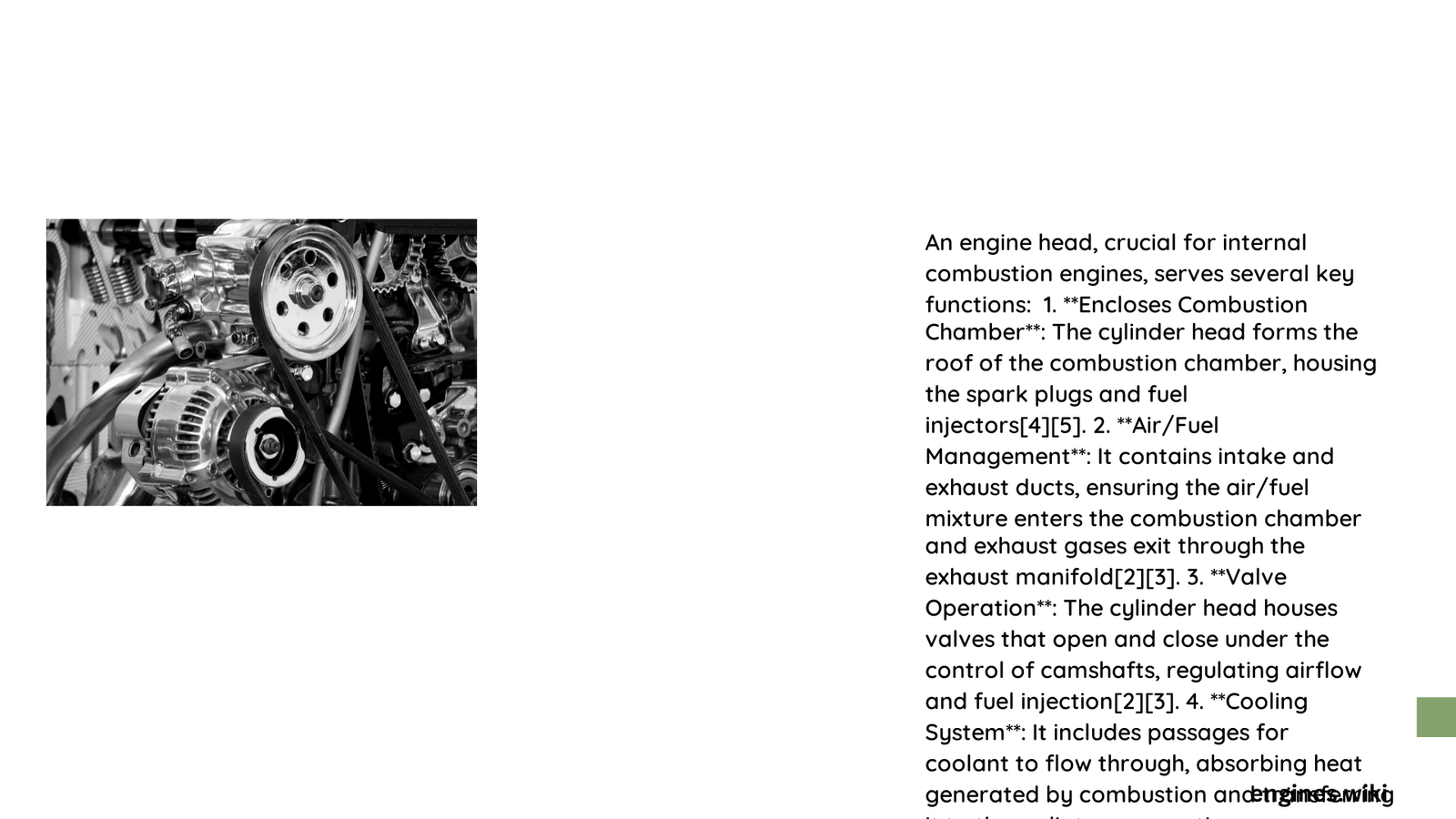Engine heads are sophisticated mechanical components that serve as the critical interface between combustion, airflow, and power generation in internal combustion engines. These precision-engineered structures control the complex interactions of valves, fuel mixture, and exhaust gases, transforming thermal energy into mechanical motion through meticulously designed chambers and timing mechanisms.
What Are Engine Heads?
Engine heads represent the top portion of an internal combustion engine, serving as a critical junction between multiple mechanical systems. They house essential components that manage the combustion process, including valves, combustion chambers, and coolant passages.
Core Functions of Engine Heads
| Component | Primary Function | Performance Impact |
|---|---|---|
| Combustion Chamber | Fuel mixture ignition | Power generation |
| Intake Valves | Air-fuel mixture entry | Engine breathing |
| Exhaust Valves | Spent gas expulsion | Efficiency control |
How Do Valve Mechanisms Operate?

Valve Timing Principles
Valve mechanisms operate through synchronized movements controlled by:
- Camshaft: Drives valve opening and closing
- Valve Springs: Ensure precise valve closure
- Rocker Arms: Transfer camshaft motion to valves
Key Valve Operation Characteristics
- Precise timing synchronization
- Microsecond-level movement accuracy
- Temperature and pressure resistance
What Materials Compose Engine Heads?
Modern engine heads utilize advanced materials designed for extreme performance:
- Aluminum Alloys: Lightweight, excellent heat dissipation
- Titanium Components: High strength-to-weight ratio
- Specialized Composites: Enhanced thermal management
How Do Combustion Chambers Function?
Combustion chambers represent the critical zone where fuel transformation occurs. Their geometric design directly influences:
- Flame propagation efficiency
- Fuel mixture distribution
- Thermal energy conversion
Combustion Chamber Design Factors
- Volume geometry
- Surface texture
- Compression ratio
- Turbulence characteristics
What Challenges Affect Engine Head Performance?
Performance limitations emerge from:
- Thermal stress
- Mechanical wear
- Precision manufacturing tolerances
- Material fatigue
Mitigation Strategies
- Advanced cooling systems
- Precision machining
- High-performance materials
- Regular maintenance
Technical Specifications
Average Engine Head Specifications:
– Material: Aluminum alloy
– Weight: 15-25 pounds
– Operating Temperature: 200-250°F
– Pressure Tolerance: 500-1500 PSI
Maintenance Recommendations
- Regular coolant system checks
- Periodic valve clearance inspection
- Timely gasket replacements
- Professional diagnostic evaluations
Performance Optimization Techniques
- Precision valve grinding
- Advanced coating technologies
- Computer-aided design improvements
- Lightweight material integration
Conclusion
Engine heads represent a pinnacle of mechanical engineering, transforming thermal energy into mechanical motion through intricate design and precise component interactions.
